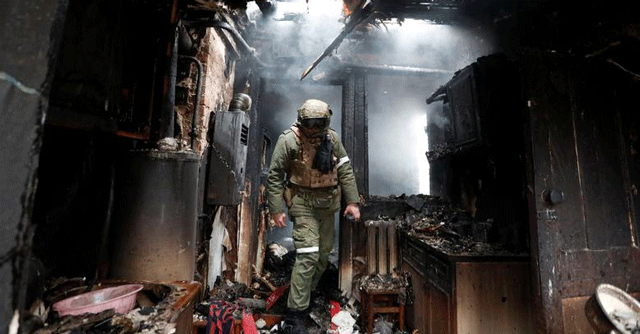
Social media, apps play crucial role in Ukraine-Russia conflict


On 26 February, Ukraine president Volodymyr Zelensky posted a video through Twitter. In the video, he refuted all reports alleging Ukraine laying down arms and surrendering to Russia as fake. “This is our land, our country, our children — and we will defend all of that,” Zelensky said in a rousing call to the Ukrainian resistance. Since then, the video has garnered close to 19 million views on Twitter alone — without counting its replications.
The interaction between Ukrainian vice-Prime Minister Mykhailo Fedorov and Tesla/SpaceX chief Elon Musk has also been a widely reported one, culminating in Fedorov tweeting a photo of a shipment carrying terminals to connect to Musk’s Starlink satellite internet service at around 2AM IST today, 1 March. Their public exchange on Twitter has since cumulatively gathered almost 2 million reactions.
OSINT reportage

Each of these instances show an increasing impact of technology on the Ukraine-Russia conflict — something that is making an impact in every sphere. From controlling media and connectivity, to open source intelligence (OSINT) reporting via social media platforms around the clock — and even fundraising for wartime aids, technology has had a clear (and predictable) role to play.
Take, for instance, some of the most notable OSINT names on Twitter. Accounts such as Status-6, Wars on the Brink, Intel Crab and Elint News — which have consistently been among the most followed accounts reporting live geopolitical conflicts — have been instrumental in reporting on-ground activity in Ukraine. At the time of publishing, Wars on the Brink posted on the advances of the Russian artillery — as well as its missile attack on a regional administration building in Kharkiv, Ukraine.
The community was also the first to report the death of an Indian student during the above-mentioned shelling, which has since been confirmed by Arindam Bagchi, spokesperson for the Indian government’s Ministry of External Affairs at 2:58PM IST. Each of these acts of real-time war reporting have been facilitated by technology driven platforms.

Attempts to control social media
While Ukraine stands to benefit from such reporting, the Russian entities have been seemingly attempting to control the same. Over the past few days, Twitter officials have alleged that the platform has been blocked in Russia. A Wall Street Journal report has stated that the Russian communications regulator, Roskomnadzor, has asked all electronic media outlets to remove any report that uses the terms ‘assault’, ‘invasion’ or ‘declaration of war’ in reference to Russia’s actions on Ukrainian soil.
The Roskomnadzor has also alleged that Meta’s Facebook has refused its application asking the company to stop its independent fact checking of state-driven propaganda. The latter, where tech corporates apply labels and other tags on content during sensitive socio-political periods, have long been contested across the world. While some have called it necessary for democracy, others have alleged technology companies as having failed to have not brought in their own biases in such actions.

On its part, Facebook has since stated that it has refused to comply with the demands of a government's demands to control information. It has also seemingly restricted the reach of posts made by Russian state-backed media in the European Union.
The same Facebook and Twitter have, as platforms, appeared to benefit those in Ukraine during this period. Reports suggest that numerous Ukrainian communities have coordinated via Facebook and Twitter to remove road signs to confuse Russian military troops. In other platforms such as Telegram, groups of individuals have reportedly been using bots to track and inform as many as possible regarding Russian military movement — and helping find shelter.
Crypto donations and cyber attacks

Amid all the social media activity, the Ukrainian government also announced through online platforms that it is accepting war aid donations in cryptocurrencies – bringing the latter under a legally accepted fold in one of the most notable ways till date. As of publishing, reports suggest that Ukraine’s cryptocurrency donations have crossed $14 million. Such a move is unprecedented, as it is likely the first move where a nation has officially accepted cryptocurrencies as tender — albeit amid extraordinary circumstances.
Cyber attacks have also played underlying roles, such as the Hermetic Wiper data stealer malware that reportedly destroyed data on key Ukrainian government servers — days prior to the initiation of the physical assault. Ukraine has also experienced multiple distributed denial of service (DDoS) attacks on various government officials, and although none have been quantifiable linked back to Russia, show how the concept of hybrid warfare is not science fiction any longer.
